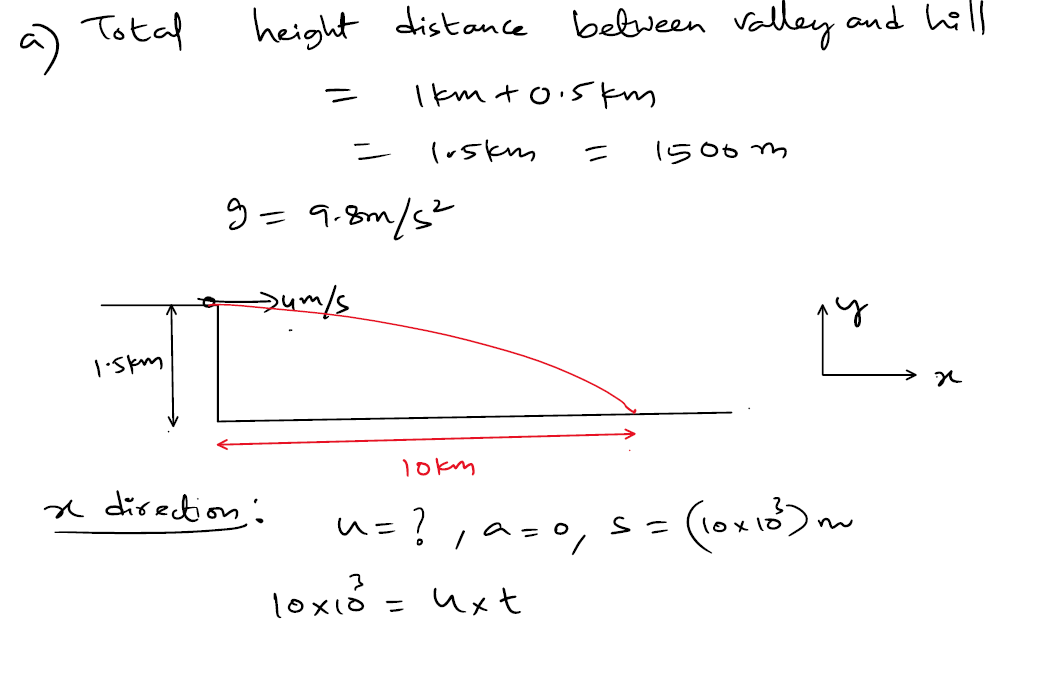The tank is to be placed on a hill that is 1 km high above the ground. The enemy's base is located at a horizontal distance of 10 km away and it is in a valley 0.5 km below the ground. Air resistance is neglected. Gravitational acceleration is constant and equal to 9.8m/s2 downwards. a) If the bomb is to be fired perfectly horizontally, what should the launching speed of the bomb be in order to hit the target? b) What is the duration it would take the bomb to hit the target? c) Find x(t) and y(t). Consider the initial location of the tank to be (0, 1 km)? d) Draw the trajectory of the bomb (x and y coordinates). Indicate clearly the value of x (horizontal displacement) when the bomb reaches the ground level. e) Draw the y(t), vy(t), and ay(t) vertical above each other. Indicate key values on the graphs such as the start, the end, the maximum, the minimum and the x and y intercepts.
Gravitational force
In nature, every object is attracted by every other object. This phenomenon is called gravity. The force associated with gravity is called gravitational force. The gravitational force is the weakest force that exists in nature. The gravitational force is always attractive.
Acceleration Due to Gravity
In fundamental physics, gravity or gravitational force is the universal attractive force acting between all the matters that exist or exhibit. It is the weakest known force. Therefore no internal changes in an object occurs due to this force. On the other hand, it has control over the trajectories of bodies in the solar system and in the universe due to its vast scope and universal action. The free fall of objects on Earth and the motions of celestial bodies, according to Newton, are both determined by the same force. It was Newton who put forward that the moon is held by a strong attractive force exerted by the Earth which makes it revolve in a straight line. He was sure that this force is similar to the downward force which Earth exerts on all the objects on it.


As the question is having more than 3 sub parts, first 3 sub parts are solved.


Step by step
Solved in 4 steps with 4 images









